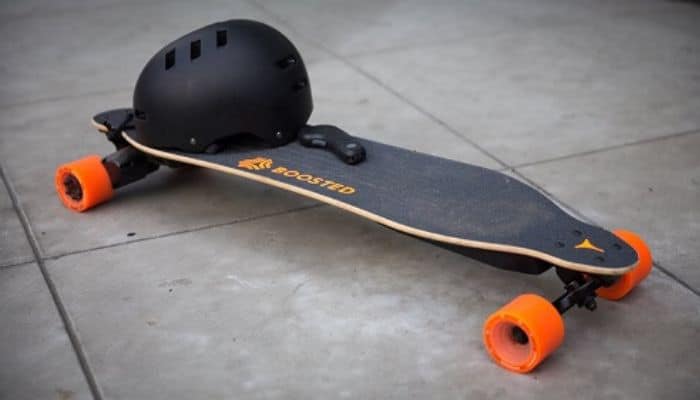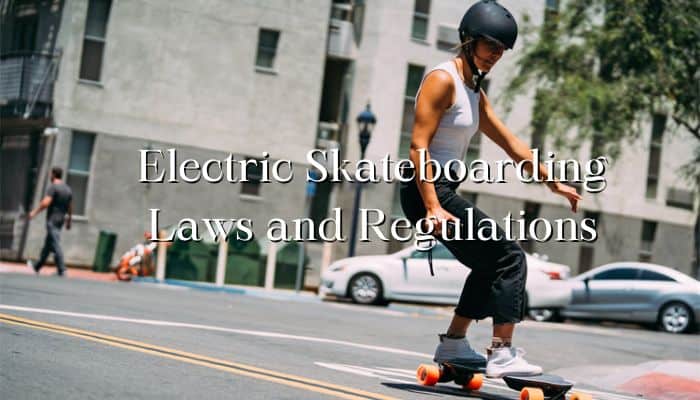As electric skateboards continue to gain popularity as a mode of personal mobility, understanding the evolving landscape of laws and regulations governing their use is crucial. In 2024, the legal framework surrounding electric skateboards and other personal mobility devices like electric scooters has become more defined, reflecting their increased presence in urban areas. This two-part blog post aims to provide a comprehensive overview of electric scooter and skateboarding laws and regulations, helping riders navigate the legalities and stay compliant.
Understanding the Legal Status of Electric Skateboards
Electric skateboards, often classified under personal mobility devices or motorised devices, have varying legal statuses across different regions. While some areas treat them similarly to traditional skateboards, others classify them alongside other recreational devices as electric bikes or scooters. It’s essential to be aware of how electric skateboards are defined in your area to understand the applicable laws.
Speed Limits and Riding Areas
One of the most common regulations for electric skateboards in 2024 is the imposition of speed limits. Typically, these limits are set around 20-25 km/h, but they can vary. Riders should be aware of the maximum speed limit allowed in their area to avoid penalties. Additionally, the use of electric skateboards on public roads, bicycle lanes, and shared paths is often regulated, with some areas allowing them and others restricting their use to private property only.
Helmet and Protective Gear Requirements
Safety is a top priority, for electric skateboards varies and many regions now require electric skateboard riders to wear approved bicycle helmets and other protective gear. This regulation aims to reduce the risk of injury, especially in the event of a collision with other road users or pedestrians.
Registration and Insurance
In some jurisdictions, electric skateboards are required to be registered as motor vehicles and may need compulsory third party insurance. This is particularly the case in areas where they are allowed to be used on public roads and in road-related areas. Riders of e boards should check local laws to determine if such requirements apply to them.
Age and Licensing Restrictions
Age restrictions are also a common feature of electric skateboarding laws. In many places, riders must be above a certain age, often 16 or 18, to legally operate an electric skateboard. Additionally, some regions may require a driver’s license or a special permit to ride electric skateboards on public bicycle paths, or roads.

Lighting and Warning Devices
To enhance visibility and safety for electric motor using, especially during night riding or in hazardous weather conditions, laws often mandate the use of steady white lights at the front and red lights at the rear of electric skateboards. A warning device, like a bell or horn, is also commonly required to alert other pedestrians and road users.
Local Variations and Specific Laws
It’s important to note that electric skateboard laws and regulations can vary significantly between different states, provinces, or countries. For instance, the rules in New South Wales may differ from those in Western Australia or South Australia. Local authorities often have the power to set specific laws, so it’s crucial to be informed about the regulations in your specific area.
Use of Separated Paths and Shared Use Paths
In many regions, electric skateboards are allowed on separated paths, bike lanes and shared use paths, which are designated for bicycles and pedestrians. However, riders must be cautious and respectful of other pedestrians, maintaining a safe speed and keeping a safe distance. In some areas, there might be specific regulations about yielding to pedestrians or using certain parts of these paths.
Regulations in High-Demand Urban Areas
In densely populated or high-demand urban areas, additional regulations might be in place to manage the flow and safety of electric skateboard riders. This could include designated zones where electric skateboards are prohibited or areas where electric skateboards legal riders must adhere to stricter speed limits. Busy roads and areas near public transportation hubs often have specific rules to prevent accidents and ensure the safety of all road users.
Compliance with Local Laws and National Transport Commission Guidelines
Compliance with local laws is paramount for electric skateboard riders. In addition to understanding national regulations, all e scooter riders must be aware of any local ordinances that might affect where and how they can use their electric skateboards. The National Transport Commission often provides guidelines, but the implementation can vary significantly between different local authorities.

Licensing, Medical Certificates, and Insurance
While not universally required, some regions may demand that electric skateboard riders have a valid driver’s license, a medical certificate deeming them fit to ride electric wheelchairs, or specific insurance coverage. This is particularly true in areas where electric skateboards are classified similarly to motor vehicles or mobility scooters.
Safety in Hazardous Conditions
Riders are often required to take extra precautions in hazardous weather conditions. This might include using additional lights, reflective gear, or even abstaining from riding in extreme conditions. The emphasis is on personal safety and the safety of others in the vicinity.
Future Outlook: Evolving Regulations and Technology
As electric skateboarding continues to grow in popularity, we can expect further evolution in both the technology and the legal frameworks governing their use. Future advancements in e scooters may include more sophisticated safety features, such as advanced braking systems or collision avoidance technology, which could influence regulatory changes.
Public Awareness and Education
With the increasing presence of electric skateboards, public awareness and education become crucial. Riders need to be informed about their responsibilities and the rules they must follow. Similarly, other road and motor vehicle users and pedestrians should be educated about sharing spaces with electric skateboards to foster a harmonious coexistence.
Conclusion
In conclusion, the world of electric skateboarding in 2024 is marked by a dynamic interplay of evolving laws, technological advancements, and growing public awareness. As electric skateboards cement their place in the urban transportation landscape, it’s essential for riders to stay informed and compliant with the latest regulations. By doing so, they contribute to a safer, more efficient, and more enjoyable urban mobility experience for everyone. The future of electric skateboarding looks bright, with the potential for even more innovative developments and a continued focus on safety, mobility aids and sustainability.

